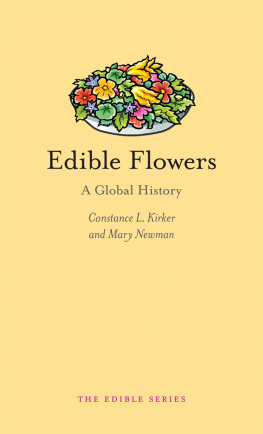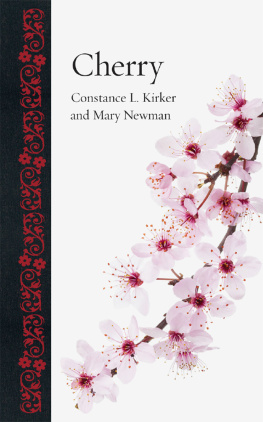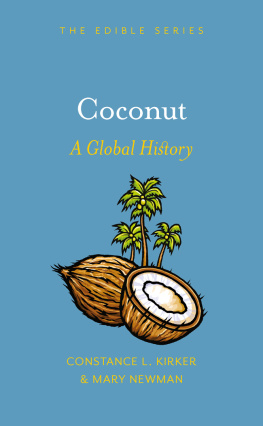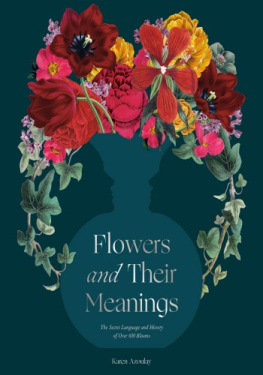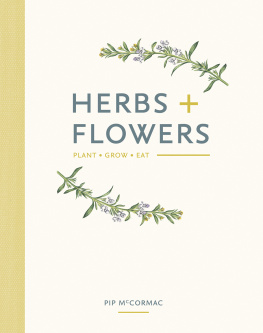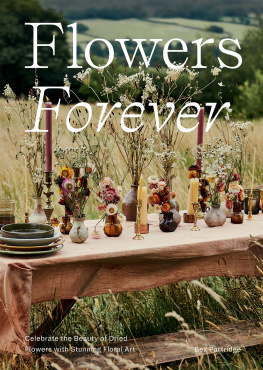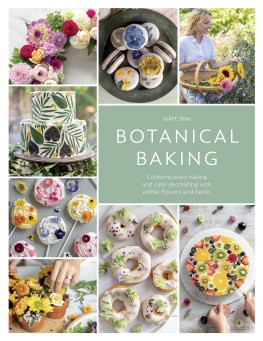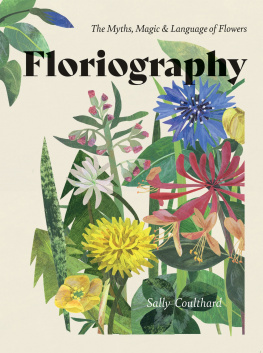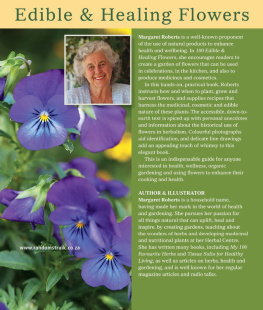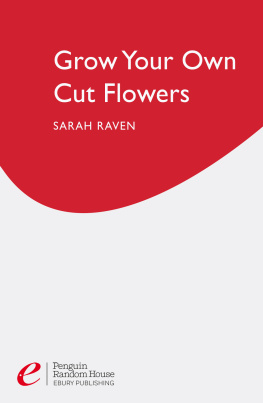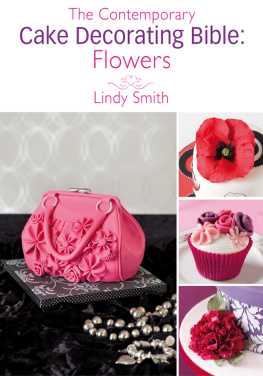EDIBLE FLOWERS

Edible
Series Editor: Andrew F. Smith
EDIBLE is a revolutionary series of books dedicated to food and drink that explores the rich history of cuisine. Each book reveals the global history and culture of one type of food or beverage.
Already published
Apple Erika Janik Banana Lorna Piatti-Farnell
Barbecue Jonathan Deutsch and Megan J. Elias
Beef Lorna Piatti-Farnell Beer Gavin D. Smith
Brandy Becky Sue Epstein Bread William Rubel
Cake Nicola Humble Caviar Nichola Fletcher
Champagne Becky Sue Epstein Cheese Andrew Dalby
Chillies Heather Arndt Anderson Chocolate Sarah Moss
and Alexander Badenoch Cocktails Joseph M. Carlin
Curry Colleen Taylor Sen Dates Nawal Nasrallah
Doughnut Heather Delancey Hunwick Dumplings Barbara Gallani
Edible Flowers Constance L. Kirker and Mary Newman
Eggs Diane Toops Fats Michelle Phillipov Figs David C. Sutton
Game Paula Young Lee Gin Lesley Jacobs Solmonson
Hamburger Andrew F. Smith Herbs Gary Allen
Hot Dog Bruce Kraig Ice Cream Laura B. Weiss
Lamb Brian Yarvin Lemon Toby Sonneman
Lobster Elisabeth Townsend Melon Sylvia Lovegren
Milk Hannah Velten Mushroom Cynthia D. Bertelsen
Nuts Ken Albala Offal Nina Edwards Olive Fabrizia Lanza
Onions and Garlic Martha Jay Oranges Clarissa Hyman
Pancake Ken Albala Pasta and Noodles Kantha Shelke Pie Janet Clarkson
Pineapple Kaori O Connor Pizza Carol Helstosky
Pork Katharine M. Rogers Potato Andrew F. Smith
Pudding Jeri Quinzio Rice Renee Marton Rum Richard Foss
Salad Judith Weinraub Salmon Nicolaas Mink Sandwich Bee Wilson
Sauces Maryann Tebben Sausage Gary Allen Soup Janet Clarkson
Spices Fred Czarra Sugar Andrew F. Smith Tea Helen Saberi
Tequila Ian Williams Truffle Zachary Nowak
Vodka Patricia Herlihy Water Ian Miller
Whiskey Kevin R. Kosar Wine Marc Millon
Edible Flowers
A Global History
Constance L. Kirker and Mary Newman
REAKTION BOOKS
Published by Reaktion Books Ltd
Unit 32, Waterside
4448 Wharf Road
London N1 7UX, UK
www.reaktionbooks.co.uk
First published 2016
Copyright Constance L. Kirker and Mary Newman 2016
All rights reserved
No part of this publication may be reproduced, stored in a retrieval system, or transmitted, in any form or by any means, electronic, mechanical, photocopying, recording or otherwise, without the prior permission of the publishers
Page references in the Photo Acknowledgements and
Index match the printed edition of this book.
Printed and bound in China by 1010 Printing International Ltd
A catalogue record for this book is available from the British Library
eISBN: 9781780236841
Contents

Introduction

Perhaps it was luck, or maybe it was the work of the Kitchen Gods. After all, it is during Tet the Vietnamese New Year when the Kitchen Gods report the doings of mortals to the ruler of the spirit realm. Whatever the explanation, it was serendipitous that, after five weeks researching edible flowers in Southeast Asia, we stumbled upon a brand new restaurant in Ho Chi Minh City named Chi Hoa. In Vietnamese hoa means flower and the first thing we noticed on the menu was lau hoa, flower hotpot. This was where we were meant to be.
Stunning fresh blossoms of squash, daylilies, white so dua flowers, lotus stems and yellow velvetleaf buds made up the floral ingredients in our flower hotpot. All of these were cooked together in a light pineapple soup base that included chunks of salmon. The restaurants brochure explained why the name had been chosen: Chi Hoa, which means flowers, is a common name of many Vietnamese women who are sophisticated, caring and always bring great love into every meal they cook for their family. The friendly and accommodating manager of this shiny new restaurant summarized his philosophy for us: Yes... we treat you like you are part of our family. His statement echoed precisely what we had learned in our research about the power of flowers in relationship to the food we eat. Everywhere in the world, both historically and in contemporary cuisines, the use of flowers in food has been special and exceptional and the flowers themselves have always been included with intent and care, never accidentally or without purpose. Flowers are used in food by someone who cares about you, and who cares about the beauty of what you are about to eat.
What is it that makes flowers, which often have only a hint of taste or flavour, such powerful ingredients in culinary traditions throughout human history? How have they been used since the time of the first prehistoric, primitive foragers to sophisticated court chefs of the medieval period? Why are edible flowers having such a resurgence in cuisines today, from proponents of the farm-to-table movement to contemporary kings of molecular gastronomy?
Researchers of behavioural science have shown that the presentation of flowers to someone almost always guarantees a Duchenne smile a facial expression of genuine pleasure. Any mother, hostess or chef can testify that beautifully presented food will elicit such a smile. Flowers on the table are a must, flowers as a garnish on a plate a lovely surprise, but the idea of flowers as an integral culinary ingredient is much less familiar to us. This book explores the history of edible flowers and encourages everyone to try flower power in their cooking.

During Tet in Vietnam, the Kitchen Gods report to the ruler of the spirit realm the doings of the household for that year. These kitchen gods were purchased in a market in Hue, Vietnam.

Flower hotpot, a speciality at Chi Hoa restaurant, Ho Chi Minh City, Vietnam.

Aztec forager, sketch from the 16th-century Florentine Codex. Since earliest times, man has foraged for edible flowers.
For the purposes of this book, we are defining a flower simply as the seed-bearing part of a plant: this consists of stamens, which are coated with pollen, the male seed of the flower; and pistils, the reproductive organs of the plant, which are surrounded by brightly coloured petals (the corolla) and green sepals (the calyx). The prolific Belgian novelist Amlie Nothomb aptly defines a flower as a giant sexual organ in its Sunday best.

